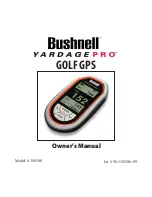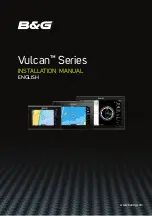
GPS 400 Pilot’s Guide and Reference
190-00140-60 Rev. E
10-3
SECTION 10
ADDITIONAL FEATURES
comes between the transponder antenna (usually located
on the underside of the aircraft) and the ground-based
radar antenna, the signal may be temporarily interrupted.
Other limitations and anomalies associated with TIS are
described in the AIM, Section 1-3-5.
TIS is unavailable at low altitudes in many areas
of the U.S., particularly in mountainous regions.
Also, when flying near the “floor” of radar
coverage in a particular area, intruders below
the client aircraft may not be detected by TIS.
TIS information is collected one radar scan prior to
the scan during which the uplink occurs. Therefore, the
surveillance information is approximately 5 seconds old.
In order to present the intruders in a ‘real time’ position,
the TIS ground station uses a predictive algorithm in
its tracking software. This algorithm uses track history
data to extrapolate intruders to their expected positions
consistent with the time of display in the cockpit.
Occasionally, aircraft maneuvering causes this algorithm
to induce errors in the GPS 400 display. These errors
primarily affect relative bearing information and traffic
target track vector (it lags); intruder distance and altitude
remain relatively accurate and may be used to assist “see
and avoid”. Some of the more common examples of these
errors follow:
•
When client or intruder aircraft maneuver
excessively or abruptly, the tracking algorithm
may report incorrect horizontal position until the
maneuvering aircraft stabilizes.
•
When a rapidly closing intruder is on a course
that crosses the client aircraft course at a shallow
angle (either overtaking or head on) and either
aircraft abruptly changes course within 0.25 nm,
TIS may display the intruder on the wrong side of
the client.
The preceding errors are relatively rare occurrences
and are corrected within a few radar scans once the course
has stabilized.
Users of TIS can render valuable assistance in the
correction of malfunctions by reporting their observations
of undesirable performance.
Reporters should identify:
• Time of observation
• Location, type, and identity of aircraft
• Condition observed
• Type of transponder, processor, and software in
use
Since TIS performance is monitored by maintenance
personnel rather than ATC, it is suggested that malfunctions
be reported in the following ways:
•
By telephone to the nearest Flight Service Station
(FSS) facility.
•
By FAA Form 8000-7, Safety Improvement
Report, a postage-paid card designed for this
purpose. These cards may be obtained at FAA
FSS’s, General Aviation District Offices, Flight
Standards District Offices, and General Aviation
Fixed Based Operations.
















































